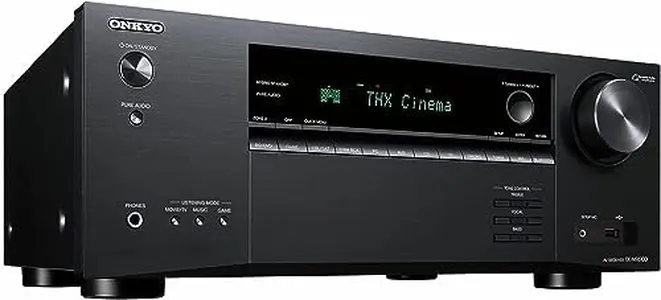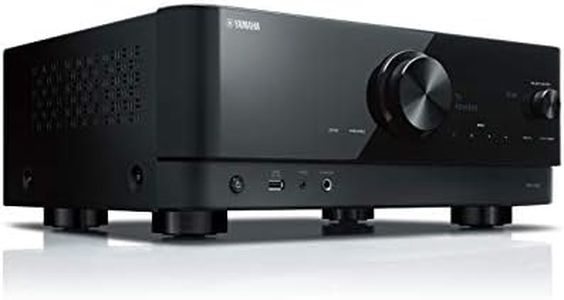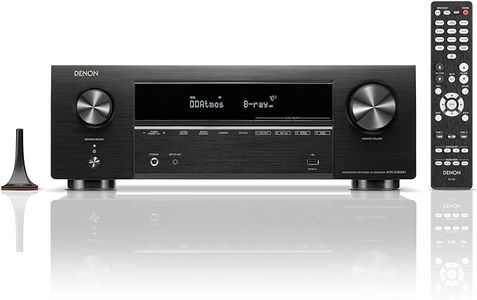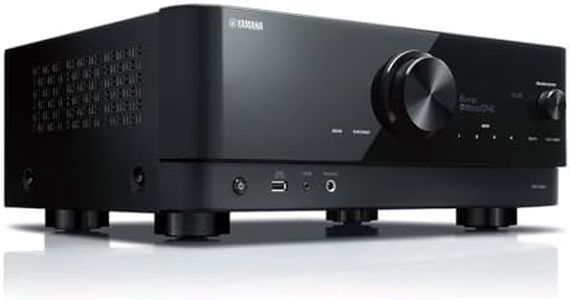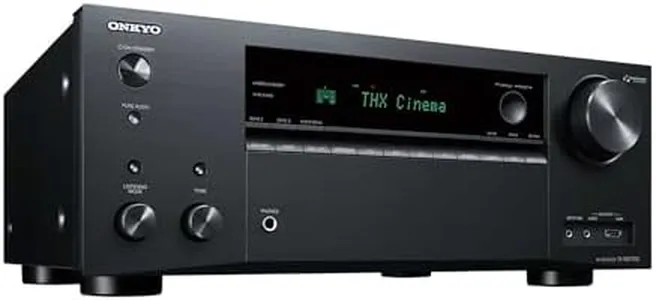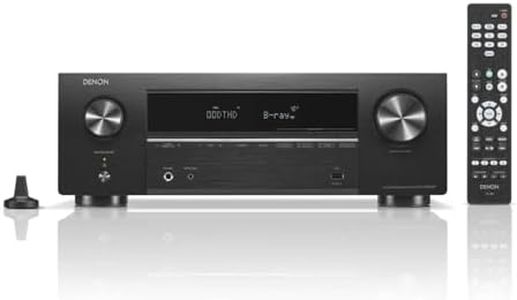We Use CookiesWe use cookies to enhance the security, performance,
functionality and for analytical and promotional activities. By continuing to browse this site you
are agreeing to our privacy policy
10 Best Atmos Receivers
From leading brands and best sellers available on the web.By clicking on a link to a third party's website, log data is shared with that third party.
Buying Guide for the Best Atmos Receivers
When shopping for an Atmos receiver, it's important to understand that you're choosing the brains of your home theater system. An Atmos receiver not only sends audio and video signals to your speakers and TV, but it also decodes 3D surround sound formats like Dolby Atmos, allowing you to experience more immersive audio. Your goal is to choose a model that matches both your current needs and future plans, factoring in your room size, speaker setup, and what you like to watch or listen to. Focusing on how you plan to use the receiver—whether for movies, gaming, or music—helps guide your choice toward models with the right features and flexibility.Number of ChannelsThe number of channels tells you how many speakers the receiver can power individually. For Atmos soundtracks, you'll want a receiver that supports at least 7 channels, which means it can drive speakers all around you, including some overhead or upward-firing speakers for that 3D sound effect. Receivers generally come in 5, 7, 9, 11, or more channels. If your room is small or you want a basic setup, 5 or 7 channels may be enough. For larger rooms or if you want true overhead sound, look for higher channel counts like 9 or 11. Think about whether you want to upgrade your system in the future; if so, more channels give you more flexibility down the road.
Supported Audio FormatsThis spec tells you what types of surround sound the receiver can decode and deliver, with Dolby Atmos and DTS:X being the main immersive 3D audio formats right now. The more formats supported, the more future-proof and flexible your system will be. As a minimum, make sure your receiver supports Dolby Atmos, but having DTS:X and others is a nice bonus. If you enjoy movies and streaming content, double-check that your receiver covers the formats used by your favorite platforms.
Power Output (Wattage per Channel)Power per channel is about how much energy the receiver can send to each speaker, which affects how loud and clear the sound will be. Higher wattage is generally better for bigger rooms or when you want very dynamic sound. Typical values range from about 50 to over 150 watts per channel. For smaller spaces, less power may be fine, while larger rooms or more demanding speakers benefit from higher wattage. Consider your room size and how loud you like to listen when deciding on the right amount of power.
HDMI Inputs and OutputsThis tells you how many HDMI devices (like streaming boxes, game consoles, or Blu-ray players) you can connect to your receiver, and how many TVs or projectors you can hook up. More HDMI inputs mean you can connect more things at once without swapping cables. Most people want at least 4 HDMI inputs for comfort, but heavy users may need 6 or more. Think about all your current and future devices when making your choice, and look for HDMI outputs that match your plans for a single or multi-room video setup.
Room CalibrationRoom calibration is a feature that helps adjust the sound from your speakers to fit your room’s acoustics. The receiver listens to test tones through a microphone and makes automatic adjustments for the best sound. Most mid- and high-end receivers offer some version of this, and it can significantly improve audio quality, especially in rooms with odd shapes or furniture. If you want the easiest possible setup and consistently good sound, pick a receiver with strong room calibration technology.
Wireless FeaturesThis refers to whether the receiver can stream music wirelessly from your phone or online services, and if it can connect to other smart home devices. Features like Bluetooth, Wi-Fi, AirPlay, Chromecast, and built-in streaming apps add a lot of convenience. If you enjoy streaming music or want to control your receiver through voice assistants or an app, look for models with robust wireless features. Consider your home network and other smart devices you use when making your pick.
Video Features and HDMI VersionModern receivers act as a hub for both sound and video, so the HDMI version and video features matter if you have a 4K or 8K TV, want high refresh rates (like for gaming), or plan to use HDR (High Dynamic Range). Newer HDMI versions (like 2.1) support these advanced features. If you’re a gamer, or you have a recent high-end TV, ensure your receiver matches by supporting the latest video tech; otherwise, a slightly older version might be sufficient for general movie watching.
